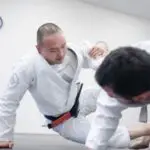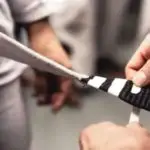Flexibility is one of those things that we all like to joke about and even wish we were more flexible. I know I have and I also know that my lack of flexibility in the past has prevented me from utilizing positions and techniques. It has even affected my deadlift outside of Jiu-Jitsu!
During a time where I was unable to train Jiu-Jitsu for a few months, I focused on flexibility. And after returning to class with increased flexibility I can tell you, it is amazing! This article will go into the details of the overall benefits of flexibility and the benefits of flexibility in Jiu-Jitsu.
Flexibility in Jiu-Jitsu helps you control your body allowing you to perform techniques quicker and more precisely. There is less risk of injury as your muscles and tendon have a greater capacity to accept the explosive movements in Jiu-Jitsu (and grappling). The overall benefits of flexibility are: helps prevent injuries, improves physical performance, reduces muscular pain, postural problems, relaxes the body, provides more blood and nutrients to the muscles, and better coordination.
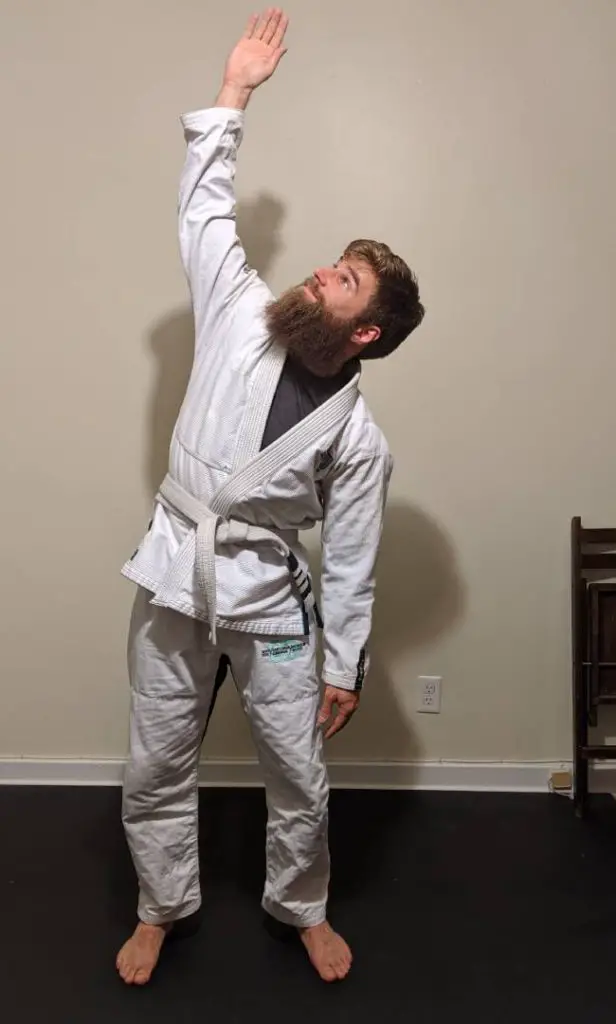
What Is Flexibility?
Let’s first look at what flexibility is to quickly understand what is being achieved when flexibility is increased.
Flexibility is basically the ability to move a muscle or joint through a certain range of motion. A well-stretched muscle can more easily achieve its full range of motion.
Flexibility is limited by the muscles involved in that movement. If these muscles have a good capacity to stretch and contract, then the overall flexibility capacity will also be good.
What Are The General Benefits Of Flexibility?
There are 5 general benefits to flexibility:
- Helps prevent injuries.
- Improve your overall physical performance.
- Reduce muscular pain and postural problems.
- Helps relax your body.
- Provide more blood and nutrients to the muscles.
- Better coordination.
1. Helps Prevent Injuries
In Jiu-Jitsu there is a lot of explosive techniques and activities performed. High-intensity activities like the ones performed in Jiu-Jitsu (just think of an explosive bridge escape or take-down) require a muscle-tendon unit that is compliant enough to store and release the high amount of elastic energy.
Tendons and muscles that are not sufficient enough to handle the force are more susceptible to be damaged. Whether it is from a partial tear, pulled muscle, or the tendon detached – to name a few examples.
A well-stretched muscle and tendon are able to accept a greater amount of energy and handle more load as it is not reached it’s maxed out state.
2. It Can Improve The Overall Physical Performance
A flexible articulation has the capacity to move in a larger range and requires less energy to do that. At the same time, this also reduces the chances of getting lesions due to the decreased resistance in tissues.
On the other hand, a muscle that has the ability to relax enough – due to its greater flexibility – can also contract faster, and this also increases its strength.
3. Reduction In Muscular Pain And Postural Problems
Slow and static stretches can reduce pain in muscles after training. These exercises also improve muscular balance and general posture.
4. It Helps You To Be Physically Relaxed
In order to be able to stretch, a muscle must be first relaxed. A constant contraction in a muscle requires more energy, so this also accumulates more “stress” in the muscle.
As stretching also decreases muscular pain, it also provides you with a well-being sensation while you practice these exercises.
5. It Helps To Provide More Blood And Nutrients To The Muscles
Stretching exercises increase the temperature in muscles, so this increases the flow of blood and nutrients for them. This stretching also helps to promote synovial fluid flow in articulations, which keeps them healthy.
6. Better Muscular Coordination
Some studies have proven that the speed of nervous impulses in the muscles improves with flexibility exercises. This obviously helps in having a better general muscular coordination.
What Are The Specific Benefits For The Martial Arts Practitioner?
Almost every martial art in the world requires hyper-extensibility in some articulations. This is because it allows the practitioner to perform the techniques with the appropriate range of movement.
In Tae Kwon Do, for example, a great level of flexibility in the articulation is something unavoidable in order to have better technical execution, and this includes a significant improvement in power and speed.
Of course, this can also be applied to any other martial art that includes kicking techniques in its repertoire, like Karate and Kung Fu.
But flexibility is also very important in the practice of martial arts like Judo and Jiu-Jitsu. In these cases, a good amount of flexibility is necessary at the trunk level to have better execution and greater speed on projection techniques, for example.
Benefits Of Flexibility For The Practice Of Jiu-Jitsu
Bruce Lee once said: “Notice that the stiffest tree is most easily cracked, while the bamboo or willow survives by bending with the wind”.
He also said: “Be water, my friend”.
These phrases are quite good to describe what a martial art like Jiu-Jitsu tries to achieve – or what their creators tried to achieve.
Independently of the school of Jiu-Jitsu, you practice (Japanese or Brazilian Jiu-Jitsu), it is very important to keep a good level of flexibility in some specific articulations. But I think this is especially true in Brazilian Jiu-Jitsu. Why?
Answer these questions for yourself:
- Can you effectively keep your leg in front of your opponent to avoid he/she passes your guard?
- Can you effectively close the triangle?
- Can you even perform effectively any technique your professor teaches you?
- I mean, do your legs and back allow you to do every technique you want? Do you have enough flexibility?
If your answer is NO to the major part of these questions, then you are in desperate need of some good stretching sessions my friend…
Yeah, because if you’re a BJJ practitioner, it doesn’t matter if you like to play top or bottom, at any time you’ll need to change your positions, and the main limitation you could find to perform a technique, is your flexibility.
I particularly think that having good flexibility is especially helpful in defense, even in traditional Jiu-Jitsu, where it can help you a lot to escape easier from some locks your opponent tries to do on you. But that’s my opinion.
Anyway, the point is that you need to have flexible hips, but also good flexibility in your backbone.
Do you want some quick examples?
There you have some experts like Rickson Gracie, Braulio Estima or the Miyao brothers. All these professional martial artists have knowledge about the studies that show the benefits of flexibility for Elite athletes, and they apply that to themselves.
You just need to watch their techniques in different competitions, they have great flexibility. They combine it with other factors like strength, endurance, tactics, and technique, and they are like high-competitive machines.
But, do you want another good example?
The Rubber Guard
I’m not trying to extend to much speaking here about specific Jiu-Jitsu techniques or practitioners, but I believe it’s the best way to make my points clear; if you want to verify if everything I’m saying here is true, just go and watch the fights on video.
It’s probable you have heard about Eddy Bravo if you like to watch BJJ or MMA competitions. He is well known in the media because he has won some important MMA competitions against great opponents – including a Gracie family member. But he is especially known due to a technique he made popular, the “Rubber Guard”.
Initially, Eddy started practicing Brazilian Jiu-Jitsu and after some years of practice, he developed his own style based on his particular physical attributes, especially flexibility.
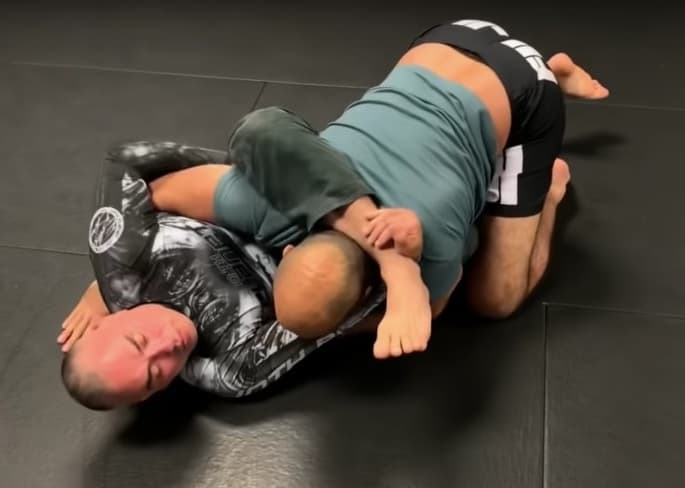
The rubber guard is basically a variation of the open guard. The defending fighter grabs his shin with his opposite arm over his opponent’s back, so keeping the opponent always “quiet down”, impeding him/her passing to an offensive position.
The “rubber guard system” popularized by Eddy, quickly became a big franchise with tons of students around the world, grabbing the attention of many professional MMA fighters.
The point is, the rubber guard requires the practitioner to have high-flexibility levels – especially in the hips – in order to perform the guard the right way, but once it’s dominated, it’s an incredibly effective technique.
What you need now, is to improve your flexibility levels. Let’s see some general recommendations for that.
Recommendations For A Good Stretching Session
In general speaking, the secret to achieve and maintain great flexibility is really simple: daily practice.
Here are some recommendations for your stretching session:
- Never stretch before getting warm first.
- Ease into your stretching, don’t increase the intensity too quickly.
- Do dynamic stretches before training and static stretches after.
Never Start A Stretching Session Without Getting Warm First.
The first thing really important here: in order to allow the muscles to properly contract and stretch, they need to have good blood flow through them, and this is achieved by performing exercises to warm up the whole body, like jogging in one place or jumping jacks for example.
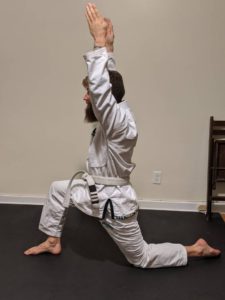
Once Your Muscles Are Warm Enough, You Can Start Doing Some Lightweight Stretching Exercises.
You can start with your least flexible body part. Never do any exercise in a drastic way as it could cause a lesion or pull to occur.
Try to be relaxed, and keep your breath slow and rhythmical; you must breathe at your own rhythm, without any pressure.
This lightweight routine should last at least 4 minutes. After that, you can proceed with your more intense stretching routine. It should last for at least 7 minutes.
Dynamic And Static Stretches
Dynamic stretches are controlled movements that target the muscles, ligaments, tendons, and other soft tissues that you’ll be using for your activity. Some examples of dynamic stretches are torso twists, knee-to-chest, and butt kicks.
Static stretches are those in which you hold a single position for a period of time, typically up to about 45 seconds. Examples of static stretches are touching your toes, overhead triceps stretch, and cobra pose.
Dynamic stretches should be used as part of your warm-up routine before any class. It’ll help prime your muscles for activity to help prevent injury.
While static stretches are best utilized after class. This final stretching will help to cool your muscles and decrease the risk of suffering lesions. Remember to always do things in a relaxed manner, never overstretch your muscles.
Daily practice
As I said before, but don’t abuse your muscles. You can alternate your daily stretching routine with some days of intense stretching, and other days of softer stretching. This way you give time for your muscles to recover.
Conclusion
The evolution of martial arts and many other sport/physical activities, flexibility is something that usually has had a secondary role. The truth is, there are more and more Jiu-Jitsu practitioners taking flexibility seriously and including stretching routines into their daily practice.
With the development of modern martial arts and their use in competitions, flexibility is becoming more and more important for a number of reasons. Mainly these relate to the improvement of technical execution and the preservation of health.
In general, the benefits of flexibility in Jiu-Jitsu will help you control your body more precisely to set up techniques and change positions. Your overall physical fitness will be enhanced and coordination improved while reducing the risk of injury.
Sources
Erik Witvrouw, Nele Mahieu, Lieven Danneels, Peter McNair: Stretching and Injury Prevention: An Obscure Relationship. (2012). https://link.springer.com/article/10.2165/00007256-200434070-00003
Benefits of flexibility Exercises – Harvard Health. https://www.health.harvard.edu/staying-healthy/benefits-of-flexibility-exercises
